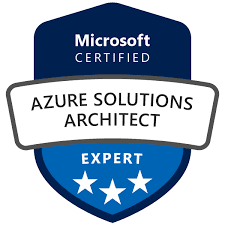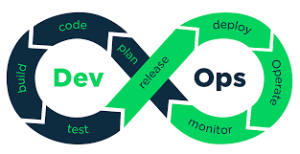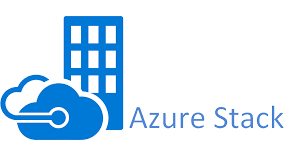Audience
Successful students have experience and knowledge in IT operations, including networking, virtualization, identity, security, business continuity, disaster recovery, data platforms, and governance. Students also have experience designing and architecting solutions.
Prerequisites
Before attending this course, delegates must have previous experience deploying or administering Azure resources and conceptual knowledge of:
• Azure Active Directory
• Azure compute technologies such as VMs, containers and serverless solutions.
• Azure virtual networking to include load balancers.
• Azure Storage technologies (unstructured and databases).
• General application design concepts such as messaging and high availability.
Skills Gained
• Design a governance solution.
• Design a compute solution.
• Design an application architecture.
• Design storage, non-relational and relational.
• Design data integration solutions.
• Design authentication, authorization, and identity solutions.
• Design network solutions.
• Design backup and disaster recovery solutions.
• Design monitoring solutions.
• Design migration solutions
Course outline
Module 1: Design a governance solution
In this module, you will learn how to secure identities with Azure Active Directory, and implement users and groups.
• Introduction
• Design for governance
• Design for management groups
• Design for subscriptions
• Design for resource groups
• Design for resource tagging
• Design for Azure Policy and Azure RBAC
• Design with Azure Blueprints
• Case study
Module 2: Design a compute solution
In this module, you will learn how to select the hosting model for the computing resources that your applications run on.
• Choose a compute service
• Design for Azure virtual machine solutions
• Design for Azure Batch solutions
• Design for Azure Container Instances solutions
• Design for Azure App Services solutions
• Design for Azure Kubernetes solutions
• Design for Azure Functions solutions
• Design for Logic App solutions
• Case study
Module 3: Design a data storage solution for non-relational data
In this module, you will learn about basic virtual networking concepts like virtual networks and subnetting, IP addressing, network security groups, Azure Firewall, and Azure DNS.
This module includes:
• Design for data storage
• Design for Azure storage accounts
• Design for data redundancy
• Design for Azure blob storage
• Design for Azure files
• Design for Azure disk solutions
• Design for storage security
• Case study
Module 4: Design a data storage solution for relational data
In this module, you will learn about Azure virtual machines including planning, creating, availability and extensions.
• Design for data storage
• Design for Azure SQL databases
• Recommend a solution for database scalability
• Recommend a solution for database availability
• Design security for data at rest, data in transmission, and data in use
• Design for Azure SQL Edge
• Design for Azure Cosmos DB and tables
• Case study
Module 5: Design data integration
In this module, you will learn about network traffic strategies including network routing and service endpoints, Azure Load Balancer, Azure Application Gateway, and Traffic Manager.
• Design for Azure Data Factory
• Design for Data Lake
• Design for Azure Databricks
• Design for Azure Synapse Analytics
• Design a strategy for hot, warm, and cold data paths
• Design Azure Stream Analytics solution for Data Analysis
Module 6: Design an application architecture
In this module, you will learn about basic storage features including storage accounts, blob storage, Azure files and File Sync, storage security, and storage tools.
• Design an application architecture
• Describe message and event scenarios
• Design a messaging solution
• Design an event solution (Event Hub and Event Grid)
• Design an application automation solution
• Design application lifecycle
• Case study
Module 7: Design authentication and authorization solutions
In this module, you will learn about Azure Table Storage and recommend options for CosmsoDB PIs.
• Design for identity and access management
• Design for Active Directory (B2B and B2C)
• Design for conditional access
• Design for identity protection
• Design for access reviews
• Design service principals for applications
• Design for Azure key vault
• Case study
Module 8: Design a solution to log and monitor Azure resources
In this module, you will create an Azure SQL Database single database, create an Azure SQL Database Managed Instance, and review high-availability and Azure SQL database.
• Introduction
• Design for Azure Monitor data sources
• Design for Log Analytics
• Design for Azure Workbooks and Insights
• Design for Azure Data Explorer
Module 9: Design network solution
In this module, you will learn about the tools an Azure Administrator uses to manage their infrastructure. This includes the Azure Portal, Cloud Shell, Azure PowerShell, CLI, and Resource Manager Templates.
• Introduction
• Recommend a network architecture solution based on workload requirements
• Design for on-premises connectivity to Azure Virtual Networks
• Design for Azure network connectivity services
• Design for application delivery services
• Design for application protection services
• Case study
Module 10: Design a solution for backup and disaster recovery
In this module, you will learn about managing your subscriptions and accounts, implementing Azure policies, and using Role-Based Access Control.
• Design for backup and recovery
• Design for Azure Backup
• Design for Azure blob backup and recovery
• Design for Azure files backup and recovery
• Design for Azure virtual machine backup and recovery
• Design for Azure SQL backup and recovery
• Design for Azure Site Recovery
Module 11: Design migrations Introduction
• Evaluate migration with the Cloud Adoption Framework
• Describe Azure Migration Framework
• Assess your workloads
• Compare migration tools
• Migrate your databases
• Select an online storage migration solution
• Select an offline storage migration solution
Schedule
Click on the following link to see the current Course Schedule
Our minimum class-size is 3 for this course.
If there are no scheduled dates for this course, it can be customized to suit the time and skill needs of clients and it can be held online, at a rented location or at your premises.
Click on the following link below to arrange for a custom course: Enquire about a course date







Reviews
There are no reviews yet.